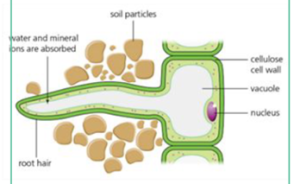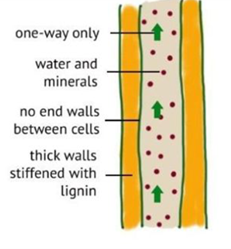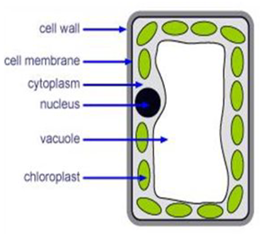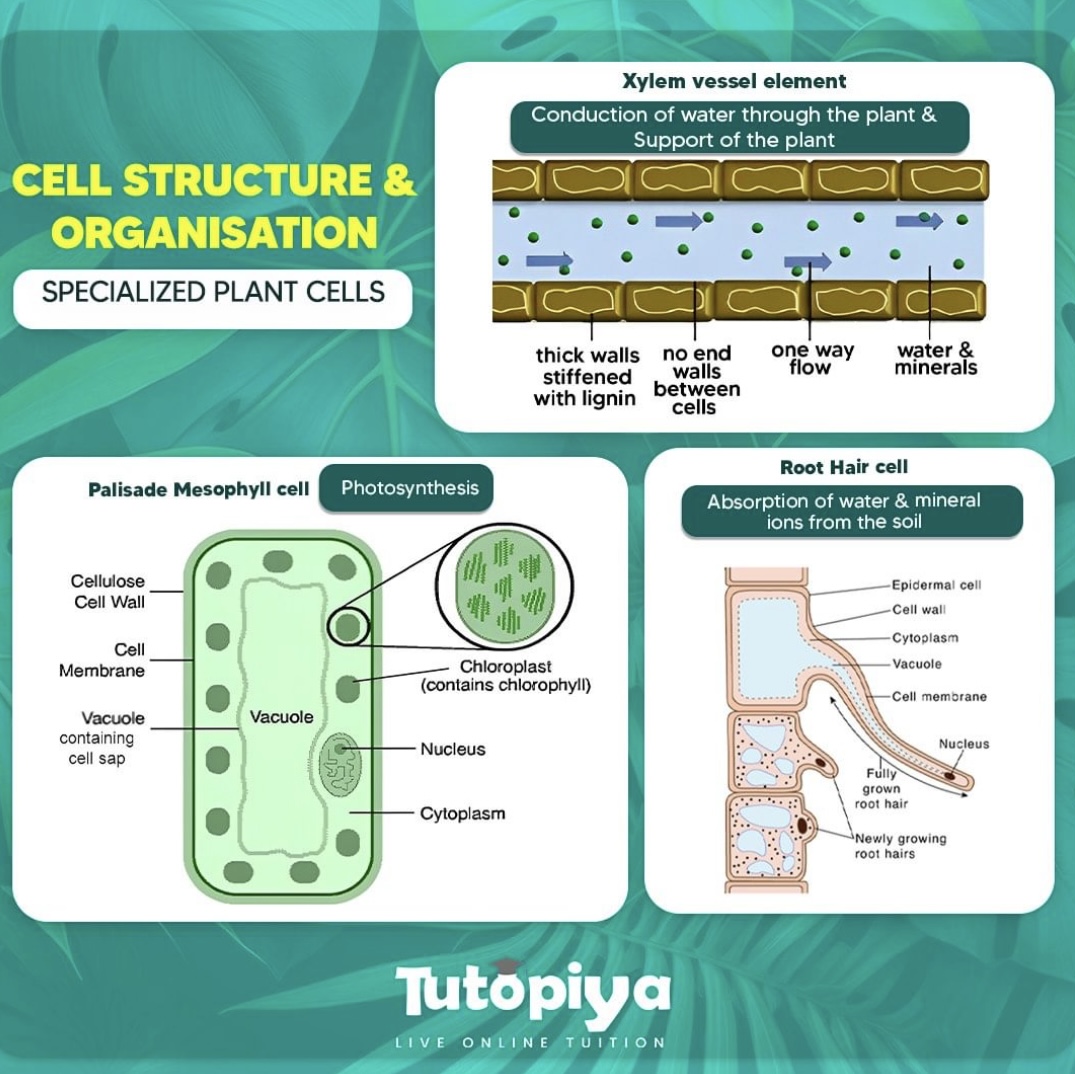[Please watch the video attached at the end of this blog for a visual explanation on Unveiling the Secrets of Specialized Plant Cell Structure and Functions!]
In one of the previous videos we learnt about the basic plant cell and the structures in a typical plant cell.
In this article, we will be taking a look at some specialised cells found in plants.
What are specialised plant cells?
Specialised plant cells are plant cells that have a specific function to perform. These plant cells have special structures or special adaptations to suit the particular function that they are about to perform.
There are three specialised cells under this topic:
- Root hair cells found in the roots of plants
- Xylem vessels which are part of the xylem tissue
- Palisade mesophyll cells which are found in leaves
1. Root Hair Cells
Root hair cells, like the name suggests, are found in the roots of the plant, and these root hair cells have specialised structures to absorb water and mineral ions, which is the main function of such cells.
In order to perform this specific function of absorbing water and mineral ions, the root hair cells have a couple of unique adaptations that are shown by this cell (see picture below).

a. Root hair cells have an extension called the root hair
This extension, or the root hair, increases the surface area of the cell, which will ensure maximum absorption of water and mineral ions by the plant.
b. The cell walls of root hair cells are extremely thin.
Thin cell walls mean that when water tries to diffuse into the plant through these cells, the water is not restricted in getting absorbed into these root hair cells due to their cell walls being thin. This ensures maximum absorption of water.
c. Root hair cells do not have chloroplast
Since these cells are found underground, they do not photosynthesise. Hence there is no need for them to have any chloroplast.
2. Xylem Vessels
Xylem vessels are the cells that conduct water up the plant once the root hair cells absorb them into the plant. These vessels are found in the xylem tissue of the root, the xylem tissue of the stem, as well as the xylem tissue of the leaf.
Water is carried in the xylem vessels from the roots, up the stem and to every single leaf every single part of the plant.

Xylem vessels also show a few special adaptations in order to carry out their functions effectively.
a. There are no top and bottom walls between the xylem vessels.
Xylem cells are stacked on top of the other in a long continuous column. However the end walls (at the upper end and bottom end of the cell) of these xylem vessels are absent and this ensures that there is a continuous column through which water can flow.
b. Xylem vessels are dead cells
These specialised cells are hollow inside. There are no organelles nor any cytoplasm. It is just a hollow empty space inside these cells, and that ensures that there is a continuous column through which water can go up these xylem vessels.
c. Cell walls are thickened with lignin
A substance called lignin has deposited in the cell walls of these xylem vessels and lignin helps to support the plant by increasing the rigidity of the cell wall. Lignin also helps with mineral transport in the vascular bundles (xylem and phloem).
3. The Palisade Mesophyll Cell
Palisade mesophyll cells are located in the leaves of the plants.
These cells show up when a cross section of a leaf is viewed through a microscope.

Palisade mesophyll cells too have some special features that make them better suited to the role they play within the plant.
a. These cells have many chloroplasts packed inside of it
Palisade mesophyll cells are filled with chloroplast, and we all know that the function of chloroplast is to carry out photosynthesis. The palisade mesophyll cell has adapted and has many chloroplasts inside it because its primary function is to carry out photosynthesis. A greater number of chloroplasts ensures maximum photosynthesis.
‘
b. Palisade mesophyll cells are column shaped
The reason that these cells are column shaped is because when sunlight falls on the leaf (top surface), the shape of the palisade cells ensure that they can absorb the maximum light energy from the sun, and maximum absorption of sunlight obviously would result in maximum photosynthesis.
Revising Unveiling the Secrets of Specialized Plant Cell Structure and Functions
Since this area relies heavily on diagrams, draw them and name each part carefully. Once exams draw near, you only have to quickly look through them to revise, and then refer to the functions of these cells.
Some questions on specialised plant cells and their functions can be found here as well, and you can time your answers to see if you can stick to the time limit given.
If you are struggling with IGCSE revision or Biology in particular, you can reach out to us at Tutopiya to join revision sessions or find yourself the right tutor for you.
Attempt the quiz to know where you stand!
